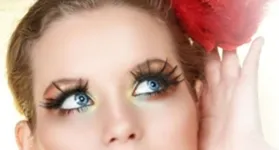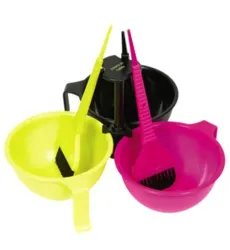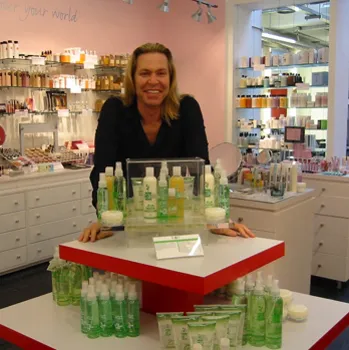
Color Catastrophes: Causes & Cures
IntroductionYou’re in the mood for some sort of pick-me-up and the color on the box is just so tempting that you snatch it up, go home and put it right on, expecting to walk out of the bathroom feeling a whole lot better about yourself. But at some point, you realize your hair is pink. Or Black. Or ghastly green. Suddenly, that great idea for self-improvement has turned into a disaster that’ll take the rest of your day to fix. Should you run straight for a salon with a scarf on your head, or is there something else you can do? Unfortunately, it depends what you did. While drug-store color looks so easy, coloring your hair really involves complex chemistry. Any color you put on your head combines with your natural shade to create an end result. Try taking two crayons and coloring yellow over black, and you soon see why that doesn’t work. You don’t get a beautiful blonde! Then, there are the principals of the color wheel to consider. Yellow and blue create green, so if you’re blonde and put a light, cool brunette shade (with a blue base) over the top, that’s just what you might see. But with a few rules to live by and a little color know-how, you can get just the shade you want. And while salons can fix big mistakes, they can make them, too. That’s why choosing a color specialist (you’ll find them at www.haircolorist.com) is important. At-Home HorrorsAs we mentioned, any shade produces a range of end results, depending on the color you apply it to. When you choose a color, look on the box to find your existing color and the end results with the color in the box. You’ll immediately see the limitations—you can’t really lighten your color more than a few shades at home without bleaching out your natural color first—a job best left to salons. If you want to go “a little darker” and your hair is porous (sun-bleached, permed, relaxed or damaged), your hair will “grab” the color and go lots darker. Also, undertones—in your hair and in the box color—matter a lot. Every color from blonde to brunette comes as a warm, cool or neutral tone. These undertones make a big difference in how the color looks on you. Remember those color wheel principles we mentioned? Some colors neutralize one another, others create secondary colors. If your hair has red or gold undertones, choose a similar product; if it’s cool, choose a ash-based product. You can usually tell by the photo on the box, or the name of the color. Strawberry blonde is warm; sandy blonde is cool.
Musts to avoid at home include making dramatic color changes, choosing a permanent color unless you’re positive about the results, using hydrogen peroxide to bleach your own hair, and failure to take the time to carefully read the instructions. You can avoid all mistakes by having the patience to do a test strand first. Choose a chunk of hair underneath your nape, follow all instructions and dry hair completely to preview the results. Like them? Go ahead and color the rest of your hair! Don’t color your hair at home if you’ve been swimming or have hard mineral water; the copper in the water could make your hair turn green. Also, be extra careful of reds. Karen, a beauty-magazine editor, just couldn’t resist trying what she’d been writing about for years. She tried out a home color that was intended to add bright red highlights to her light brown hair. When the color combined with her sun-lightened streaks, she got bright pink—at 10 p.m.! With several shampoos, the brightness of the color faded a bit, but a day later, she decided she sort of liked the shade, because she could pull it off in a fashion-related job. (Remember, of all shades, reds fade the fastest.) She could have avoided the problem by picking-up color remover at the same time she bought the color—just in case. Also, if you have a color-pigmented conditioner on hand, you can apply it with heat from a blow-dryer for 10 minutes to add a bit of depth, if you have the right color on hand. Otherwise, a trip to the salon is the sensible solution. Whatever home color product you used, if you made a mistake from Monday to Friday, between 8:30 a.m. to 8:30 p.m., or on Saturday, between 9:00 am to 6:00 p.m. (Eastern Standard Time.), get on the phone and call Clairol’s toll-free hotline at 1-800-CLAIROL. They’ll help you out. But if the disaster is a big one or your hair is breaking off, get straight to a salon. Some today have on-line real-time booking, so you can book that appointment for the next day at midnight and get some rest. Salon SnafusEven salons can make mistakes; you shouldn’t go just anywhere when you need color correction. Ask salons if they have a “corrective” specialist on staff and explain your situation before booking. If someone can’t get on the line and talk with authority, try another number. Lynn Davidson, who today is a Board Certified Colorist and owner of Hair Design by Lynn in The Woodlands, TX, says she began specializing in color when she noticed another colorist’s problems. For years, Davidson’s co-worker had been applying the same color formula to the ends and re-growth (roots) of a client’s hair; the color had no shine or luster and faded fast. Worst yet, it make the woman look older than she was. But Davidson couldn’t help; it wasn’t her client and besides, she didn’t know why the color looked so bad or how to fix it. “One day I went to a corrective color class, and when I heard the trainer talking about using the same color on the new growth and the ends, my ears pricked up,” says Davidson. “He talked about brown-out and explained why using the same formula made the color fade faster. Suddenly everything made sense.” What Davidson learned: You can color the roots with a permanent color but should refresh the rest of the hairshaft and the ends with a similar, semi-permanent color to avoid a dull build-up or a situation in which the hair gets so porous from permanent color that it can’t hold the color. At-home colorists get into the same situation when they apply a color to the whole head every time instead of simply re-touching the roots. Often, salons that specialize in color correction will say so in their advertisements, because it’s so in demand. A true corrective colorist can examine the condition of your hair and plot a course to recovery—you can’t always get what you want in a single visit if your locks are really in bad shape. For instance, if you applied a permanent color to relaxed or permed hair, breakage is the most likely result. Then, the solution is a series of protein and conditioning treatments, and gentle, temporary color, under the guidance of a pro. Still, the most likely home mistakes, say colorists, involve going black or bleaching—dramatic changes. Avoid them in the first place and you won’t be on the phone in a panic at midnight, asking friends for advice. |
| If you want to talk more about this or other hair care articles on HairBoutique.com or anywhere else, please post a message on HairBoutique.com's Hair Talk Forums.
|
Social Media Network Information
Please follow us on Twitter at: https://Twitter.com/HairBoutique. I look forward to meeting new people from all walks of Twitter and learning from their Tweets.

















